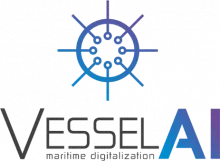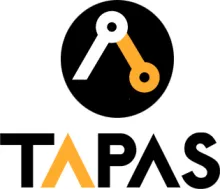Increasing Users’ Long Term Utility in Using a Gaming Platform through Recommendation and Modelling of Users Policies (INUUSE )
INUUSE

Increasing Users’ Long Term Utility in Using a Gaming Platform through Recommendation and Modelling of Users Policies (INUUSE )

EMERALDS’s vision is to design, develop and create an urban data-oriented Mobility Analytics as a Service (MAaaS) toolset, consisting of the so-called ‘emeralds’ services, compiled in a proof-of-concept prototype, capable of exploiting the untapped potential of extreme urban mobility data. The toolset will enable the stakeholders of the urban mobility ecosystem to collect and manage ubiquitous spatio- temporal data of high-volume, high-velocity and of high-variety, analyse them both in online and offline settings, import them to real-time responsive AI/ML algorithms and visualize results in interactive dashboards, whilst implementing privacy preservation techniques at all data modalities and at all levels of its architecture. The toolset will offer advanced capabilities in data mining (searching and processing) of large amounts and varieties of urban mobility data and its efficiency will be assessed, validated and demonstrated.

GREEN.DAT.AI aims to channel the potential of AI towards the goals of the European Green Deal, by developing novel Energy-Efficient Large-Scale Data Analytics Services, ready-to-use in industrial AI-based systems, while reducing the environmental impact of data management processes. GREEN.DAT.AI will demonstrate the efficiencies of the new analytics services in four industries (Smart Energy, Smart Agriculture/Agri-food, Smart Mobility, Smart Banking) and six different application scenarios, leveraging the use of European Data Spaces. The ambition is to exploit mature (TRL5 or higher) solutions already developed in recent H2020 projects and deliver an efficient, massively distributed, open-source, green, AI/FL – ready platform, and a validated go-to-market TRL7/8 Toolbox for AI-ready Data Spaces. The services will cover AI-enabled data enrichment, Incentive mechanisms for Data Sharing, Synthetic Data Generation, Large-scale learning at the Edge/Fog, Federated & Auto ML at the edge/fog, Explainable AI/Feature Learning with Privacy Preservation, Federated & Automatic Transfer Learning, Adaptive FL for Digital Twin Applications, Automated IoT event-based change detection/ forecasting. The GREEN.DAT.AI Consortium consists of a multidisciplinary group of 17 partners from 10 different countries (and one associated party), well balanced in terms of expertise.

Mobility in the urban and maritime domains hugely impacts the global economy, generating data at high rates from an increasing number of moving objects. Management of the complete lifecycle of such data implies that trustworthy and privacy-preserving infrastructures need to be put in place, so that reliable and secure data operations can be provided. Meanwhile, the mobility data exploitation still has a wide potential due to the emerging applications and the environmental footprint caused by mobility.
The Horizon Europe project MobiSpaces focus on effective data governance solutions to exploit the huge data volumes produced in secure and trustworthy digital infrastructures to enable data sharing, reuse and interoperability using standardised protocols across different organisations and stakeholders.

VesselAI aims at realising a holistic, beyond the state-of-the-art AI-empowered framework for decision-support models, data analytics and visualisations to build digital twins and maritime applications for a diverse set of cases with high impact, including simulating and predicting vessel behaviour and manoeuvring (including the human factor), ship energy design optimisation, autonomous shipping and fleet intelligence.

The goal of SIMBAD is to develop and evaluate a set of machine learning approaches aimed at providing state of-the-art ATM microsimulation models with the level of reliability, tractability and interpretability required to effectively support performance evaluation at ECAC level.
SIMBAD is conducted by a consortium composed by Nommon Solutions and Technologies (Coordinator), CRIDA, Fraunhofer Society, University of Piraeus Research Centre, and Technical University of Catalonia.

There are great expectations of Artificial Intelligence (AI) and Machine Learning (ML) technologies bringing a major breakthrough to Air Traffic Management (ATM), enabling a highly automated system able to deliver higher capacity. The reliability and safety of these systems, however, remains a key question for both users and operators and is a fundamental obstacle for the adoption of AI/ML technologies in any domain. The main objective of the EU-funded TAPAS project is to provide a set of principles and criteria which pave the way for the deployment of these technologies in ATM in a safe and trustworthy manner. eXplainable Artificial Intelligence (XAI) techniques, together with Visual Analytics, will help explore trade-offs between efficiency of AI implementations and the suitability for deployment in specific applications.

CHOROLOGOS aims at advancing the state-of-the-art in spatio-temporal-textual query processing, by introducing a novel framework that tightly combines spatio-textual and spatio-temporal querying with semantic retrieval, focusing on expressive query formulation beyond syntactical matching, efficient indexing and query processing, and scalable analysis of massive spatio-textual data.

Agriculture is a high-volume business with low operational efficiency. The EU-funded CYBELE project will generate innovation and create value in the field of agri-food in precision agriculture and precision livestock farming to increase capacity building within the industrial and research communities. The project envisages demonstrating that high-performance computing (HPC), Big Data, cloud computing, and the Internet of Things can transform farming, reduce scarcity, increase food supply, and bring social, economic and environmental benefits. CYBELE develops large-scale HPC-enabled testbeds and brings a distributed Big Data management architecture and a data management strategy that provide integrated access to large-scale data sets, a data and service-driven virtual HPC-enabled environment, and a bouquet of field-specific and generic services.

datACRON is a research and innovation collaborative project introducing novel methods for threat and abnormal activity detection in very large fleets of moving entities spread across large geographical areas. Specifically, datACRON aims to develop novel methods for real-time detection and prediction of trajectories and important events related to moving entities, together with advanced visual analytics methods, over multiple heterogeneous, voluminous, fluctuating, and noisy data streams from moving entities, correlating them with archived data expressing, among others, entities’ characteristics, geographical information, mobility patterns, regulations and intentional data (e.g. planned routes), in a timely manner. Technological developments are validated and evaluated in user-defined challenges focusing on increasing the safety, efficiency and economy of operations concerning moving entities in the Air-Traffic Management and Maritime domains. The datACRON project brings together partners from academia and industry to develop the aforementioned novel methods, together with user and data-provision partners from the two domains, in close relation to user-interest groups, focusing on real-life, industrial and user-defined challenges concerning operations (e.g. surveillance, forecasting of trajectories, characterization, etc.) regarding moving entities in sea and air.

The data migration process is described for transferring the required supporting research information into the national-level CRIS system at EKT. This process has included the mapping to the CERIF format, the harmonisation of data sources and the deduplication of redundant information. It has covered areas like project information at domestic and European level, organisational units and persons and involved the transfer of millions of records. The challenges of such a process are examined and a strategy proposed for an optimal operation of the information exchange across systems.

The goal of the AMINESS project is to promote shipping safety in the Aegean Sea through a web portal offering different levels of access to relevant stakeholders such as ship owners, policy makers, the scientific community and the general public. The portal will have three principle uses:
The project will use historical and real-time spatiotemporal and marine data, including (a) information of vessel identity, position, speed and other relevant information such as ship cargo, provided by IMIS Hellas, through the AIS (Automatic Identification System) system that effectively covers all the Aegean sea, (b) on-line weather and sea forecasting, provided by DANAOS such as wave magnitudes and wind directions and (c) geographical information indicating the position of sea, land and sea bed depth, provided by DANAOS. The foreseen environmental risk assessment methodologies and tools will extend a mature risk management framework for ship on-board risks developed by DANAOS.
Through this web-portal, the project aims directly to reduce the risk of a ship collision or grounding accident and consequently to contribute in the protection of the Aegean Sea. At the same time, the web-portal aims to bring profit to the enterprise partners of the project, by proposing risk-reducing services to ship owners. The research partners will be given a unique opportunity to advance their methodologies for real-time handling and analysis of this particularly complex streaming data, resulting from its huge size and its heterogeneous and spatiotemporal structure. Any lessons learned from the analysis of the high risk ship traffic of the Aegean Sea are likely to have direct and immediate relevance to policy makers and stakeholders globally.
